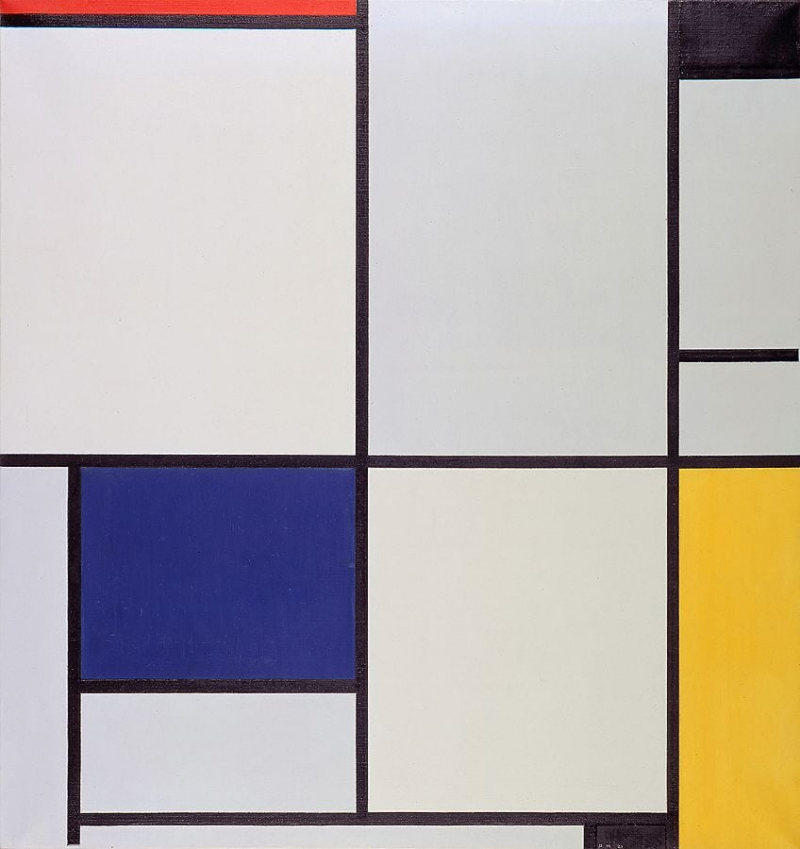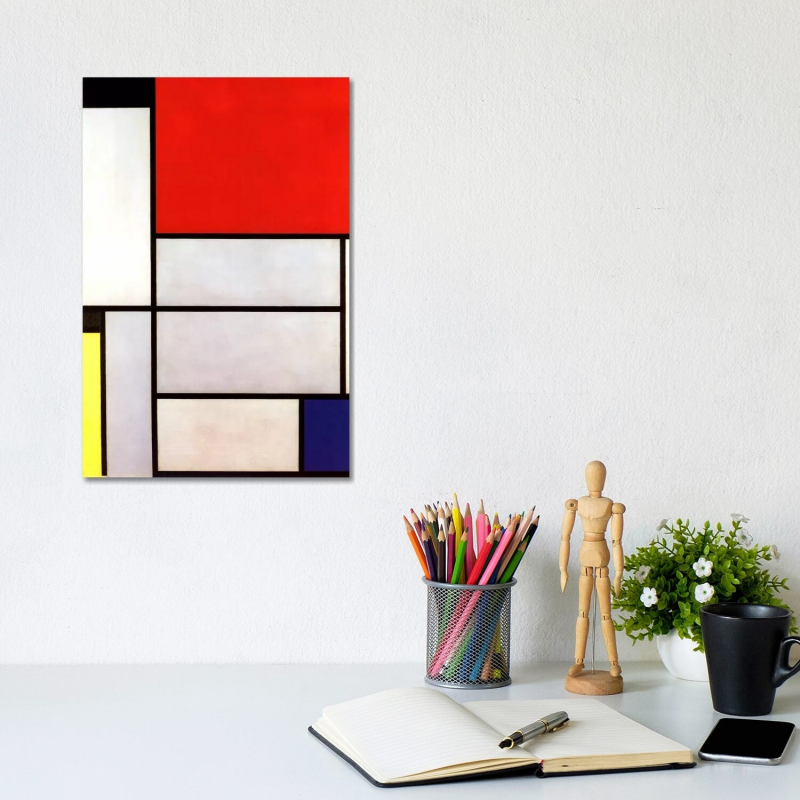Tableau I (1921)
Another significant contributor to the Abstract Art movement was the renowned Dutch artist Piet Mondrian, who produced some of the genre's most recognizable and well-known works of abstract art. Mondrian's art style underwent a substantial amount of development before being reduced to simple and uncomplicated geometric components. He is most known for his role in the Abstract and De Stijl movements. One of Mondrian's most well-known Abstract works and a good example of his technique is his 1921 painting Tableau I.
Mondrian succeeded to establish his well-known style within Abstract Art by producing a picture that used solid black lines to divide panels of paint. The majority of Mondrian's works during this time period were distinguished by this polished and harmonic balance that was established by the mathematical accuracy applied to compositions, as he relied on hard and geometric shapes to replace recognized people.
Additionally, Mondrian used monolithic blocks of color and line to underline that his works never made any kind of clear reference to anything. Tableau I's use of lines and color helped achieve the strong segregation that Mondrian aimed to achieve between viewers' brains and this abstract piece of art.
As some works can be comprehended and accepted as simple blocks of color, line, and form, this was done to emphasize the idea that logical sense did not necessarily accompany artworks.
Mondrian mainly used basic colors in this time period, as shown in Tableau I and other pieces of art. His minimalist color scheme further demonstrated his utopian belief that the universe was essentially a collection of organically occurring components that could be readily blended into geometric shapes and lines.
As seen in Tableau I, Mondrian was able to smoothly create a sense of compositional harmony within his abstracted works by making reference to the fundamental components of all colors by employing just basic colors. Tableau I, an abstract painting by Mondrian in which he attained a nearly perfect color balance, later influenced a wide range of pop and contemporary painters as well as architects and fashion designers.
Artist: Piet Mondrian (1872 – 1944)
Date Painted: 1921
Medium: Oil on canvas
Dimensions: 103 cm x 100 cm (40.5 in x 39.3 in)
Where It Is Currently Housed: Kunstmuseum Den Haag, the Netherlands












